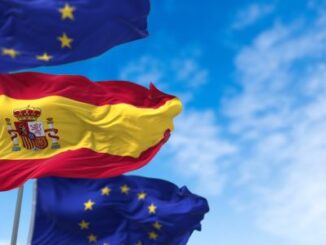
On April 28, 2025, Spain and Portugal experienced one of the most significant power outages in recent European history, plunging millions into darkness and sparking a fierce debate over grid reliability in an era of increasing renewable energy integration. Spain’s national grid operator, Redeia, has now pledged record-breaking investments to prevent future failures, as outlined in its forthcoming strategic plan. This article explores the causes of the blackout, Redeia’s proposed reforms, and how these efforts compare to the United States’ grid challenges. Additionally, it examines the growing global trend toward decentralized grid management and microgrids as solutions to counter the intermittent nature of wind and solar power.
The April 2025 Blackout: A Historic Failure
The blackout that struck the Iberian Peninsula began shortly after 12:30 p.m. on April 28, 2025, and lasted through nightfall, disrupting businesses, transportation, mobile networks, and critical infrastructure across Spain, Portugal, and briefly parts of France. Over 50 million people were affected, with cities grinding to a halt, thousands stranded on trains and in elevators, and widespread economic losses reported.
Redeia’s Response: Record Investments and Reforms
- Voltage Regulation Overhaul: Redeia will revise Operating Procedure 7.4 to allow renewables, battery storage, and other inverter-based resources (IBRs) to participate in voltage control. This change, recently approved by Spain’s National Markets and Competition Commission (CNMC), will reward performance-based contributions from all technologies, including advanced inverter-based solar, STATCOMs, and synchronous condensers.
- Enhanced Transmission Planning: The blackout highlighted physical blind spots, such as shared collector stations for large solar and wind farms, which became points of systemic fragility. Redeia plans to strengthen interconnection capacity and improve grid resilience.
- Real-Time Control and Digitalization: Investments will focus on faster control systems and digital readiness to manage the dynamic nature of renewable energy. This includes better integration with the European grid to enhance stability.
- Energy Storage and Flexibility: The Spanish government, in parallel, approved measures to boost energy storage, particularly through battery hybridization at renewable sites, and to promote electrification and self-consumption. These steps aim to enhance grid flexibility and stability.
These reforms reflect a shift toward a grid designed for the 21st century, prioritizing smarter design, decentralized resources, and performance-based market rules over legacy assumptions of centralized control.
Comparison to the United States Grid
The U.S. grid, while distinct, faces similar pressures as Spain’s, driven by rising electricity demand, extreme weather, and a transition to cleaner energy sources. The April 2025 Iberian blackout prompted U.S. regulators, including the Federal Energy Regulatory Commission (FERC), to examine vulnerabilities in the American system. Unlike Spain, the U.S. has stronger requirements for renewables to provide dynamic voltage support, mandated by FERC Order 827 since 2016. This enables wind, solar, and battery resources to regulate voltage quickly and accurately, thereby reducing the risk of cascading failures observed in Spain.
Global Trends:
- Europe: The Spanish blackout highlighted the need for decentralized resources, such as energy storage and grid-forming wind turbines, which can provide voltage and frequency support. WindEurope advocates for market signals to enable these technologies, noting that full grid-forming capabilities for wind are achievable within years.
- The United States: Microgrids are increasingly being deployed in states like California and New York, where renewable energy penetration is high. For example, community microgrids in California can island during wildfires or outages, maintaining power for critical facilities using solar, batteries, and backup generators. The U.S. Department of Energy supports microgrid development to enhance grid resilience against extreme weather and cyber threats.
- Developing Regions: In Africa and Southeast Asia, microgrids powered by solar and battery storage are electrifying remote areas, bypassing traditional centralized grids. These systems provide scalable and resilient solutions for communities vulnerable to climate-related impacts.
Benefits for Renewable Integration:
- Intermittency Mitigation: Microgrids with battery storage can smooth out fluctuations in wind and solar output, ensuring stable power delivery. For instance, solar plants can regulate voltage at night using stored energy, as seen in advanced U.S. installations.
- Resilience: Decentralized systems reduce the risk of cascading failures, as seen in Spain, by isolating faults to smaller grid segments. This is critical as extreme weather events increase globally.
- Economic Efficiency: By rewarding decentralized resources for services like voltage control, markets can incentivize investments in storage and smart technologies, as proposed in Spain’s reforms.
Challenges:
- Regulatory Barriers: Legacy grid rules, like Spain’s pre-2014 voltage control restrictions, often exclude renewables from ancillary services. Harmonizing regulations globally remains a hurdle.
- Cost: Deploying microgrids and storage requires significant upfront investment, though costs are declining as battery technology advances.
- Coordination: Decentralized systems require sophisticated digital controls to integrate with main grids, necessitating investments in cybersecurity and real-time monitoring.
Lessons for the Future
The April 2025 blackout in Spain serves as a cautionary tale for grids worldwide transitioning to renewables. Redeia’s commitment to record investments and reforms—focused on voltage regulation, transmission upgrades, and digitalization—offers a roadmap for modernizing aging infrastructure. The U.S., while ahead in some areas like renewable voltage support, must address remaining gaps to ensure reliability amid growing demand and climate stress.
Globally, decentralized management and microgrids are emerging as crucial tools to mitigate the intermittent effects of wind and solar energy. By distributing generation, enhancing storage, and leveraging innovative technologies, these systems promise greater resilience and flexibility. As Spain and other nations adapt, the energy transition demands a delicate balance: embracing clean power while reengineering grids for a dynamic, decentralized future.
This highlights the simple fact that AI is driving data center growth, and renewables are not capable of keeping up with the demand growth. As you have heard Michael and Stu discuss on the Daily Stand Up, this is prompting companies to reassess their energy needs and business continuity. If you need power to run your business, you need a backup. Microgrids with decentralized management will ensure that those who can invest in their power sources will not be impacted by poor grid policies of elected or non-elected officials in charge of the grid. What we lose is the benefit of economies of scale, and we will see who has the foresight to control their own destiny.
Investors should also look at cybersecurity companies, as the growth through microgrids will allow for an increased market for products and services to combat cyber terrorism.
Sources: OilPrice.com, Reuters, Bloomberg, E&E News, WindEurope, IEEE Spectrum, PV Tech, and posts on X. For further details on Redeia’s investment plans, visit https://oilprice.com/Latest-Energy-News/World-News/Spain-Grid-Operator-Vows-Record-Investments-After-Blackout.html.






